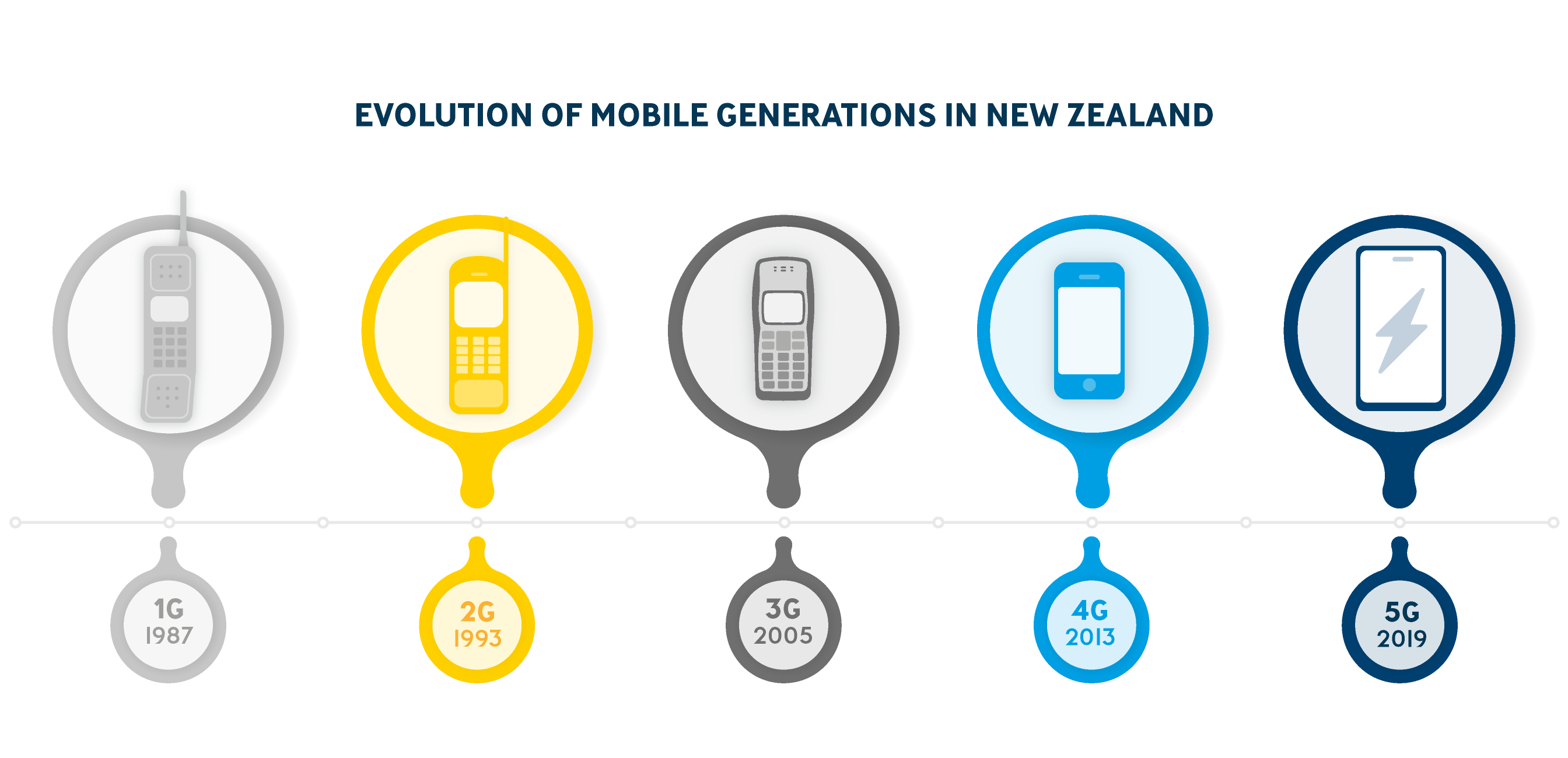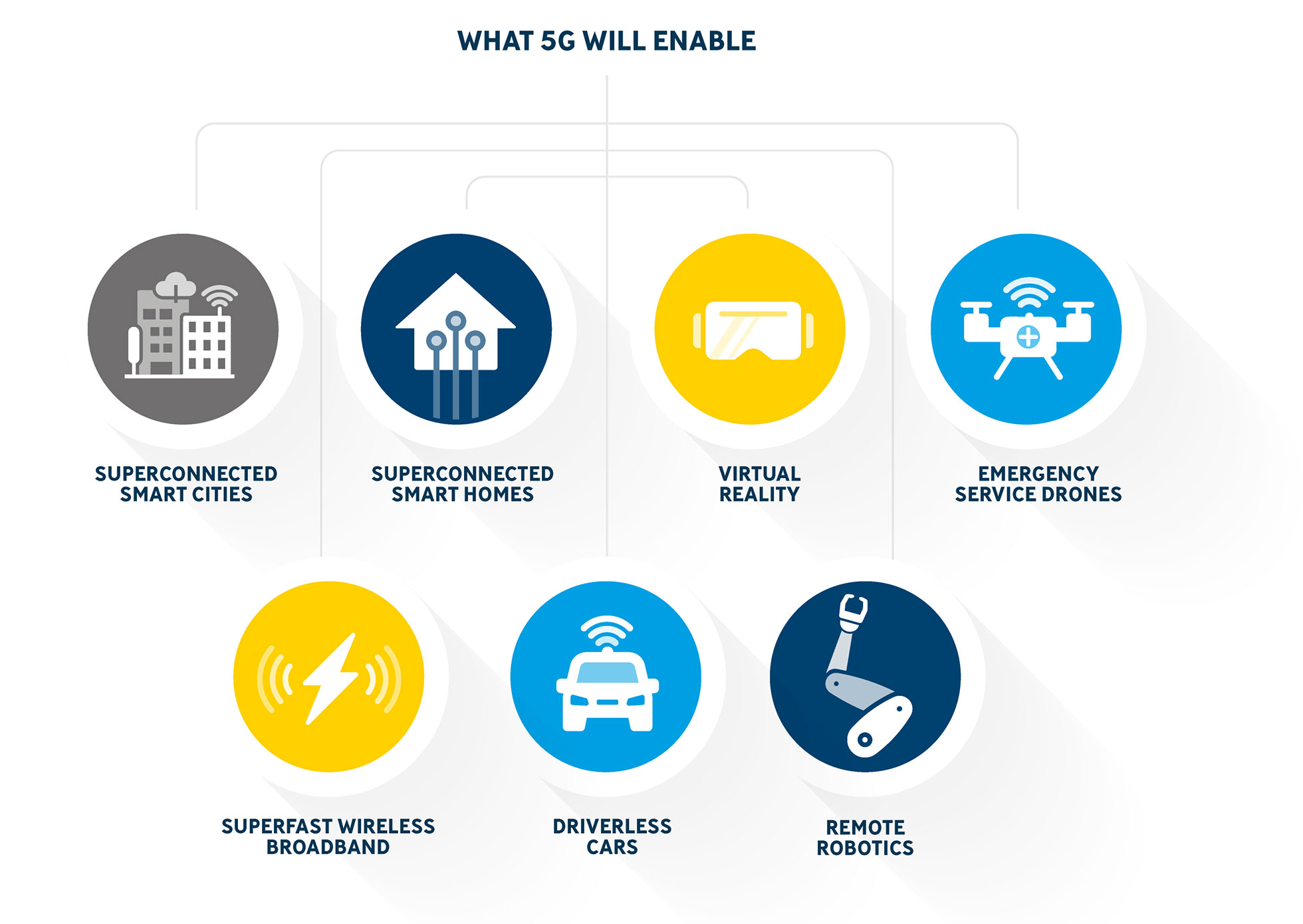5G Basics
5G simply stands for “fifth generation” and is the latest evolution of mobile technology – following 1G, 2G, 3G and 4G.
2G enabled voice and text, 3G enabled data for the first time, as well as voice and text, 4G enabled faster data services, and 5G extends data capability even further.
Frequently asked questions
What are the benefits of 5G?
- 5G will enable speeds up to 10 times faster than 4G, meaning mobile users can do more with data, quicker.
- 5G has what’s called “low latency”, which means there is almost no “lag” or delay in the signal when transmitting and receiving (which makes it ideal for live activities such as remote robotics or virtual reality).
- 5G will enable more devices to connect to each other (the internet of things) and provide larger network capacity to cater for the expected huge increase in mobile data usage.
Why does New Zealand need 5G?
- It’s vital for our country’s ongoing economic and social success that New Zealanders continue to benefit from the latest communications technologies including 5G.
- During the COVID-19 lockdowns, New Zealand’s telecommunications networks and services (both fixed and mobile) have proved to be world-class – that’s due to multi-billion investments made over recent years.
- The pace of technological advancement means another mobile generation tends to be developed every 5 to 10 years – 4G, for instance, was only rolled out in New Zealand from 2013.
- 4G has helped significantly enhance the quality and reach of mobile and high-speed wireless broadband services, improving the lives and businesses of many New Zealanders.
How does 5G sit alongside technologies such as fibre?
- New Zealanders benefit from world-class telecommunications services across both mobile and fixed networks, with the ultrafast broadband (UFB) rollout bringing fibre access to 87% of homes and businesses by the end of 2022.
- Both mobile and fixed networks are extremely important to enable high-quality connectivity, depending on the circumstances and needs of individual users.
- Mobile services rely on high-quality fibre links to transmit traffic between the cell tower nearest the user and the telecommunication provider’s core network.
How is 5G different from 4G and 3G?
- 5G is essentially the same as earlier mobile generations in how it works – it is just more modern technology that means you can do more with it, at faster speeds.
- 5G doesn’t need completely new mobile networks, it mostly requires new software on existing networks, as well as some new hardware on some cell towers.
- Another feature of 5G is that it will enable what’s called “Network Slicing” for the first time. This will allow a mobile network’s resources to be segmented for particular needs that have specific performance requirements. For instance, ultra-high quality, real-time connectivity will be vital for driverless cars, whereas for, say, a smart metering system the capacity to cope with tens of thousands of meter connections will be more important than real-time speed.
Does 5G need new cell towers and equipment?
- As with previous technology generations 5G will require some mobile network equipment and software to be upgraded.
- A lot of these changes will be “behind the scenes” within the network, although some hardware will be upgraded on existing cell towers.
- In some urban settings, new infrastructure (such as small cells located on the sides of buildings) may also be deployed over time.


